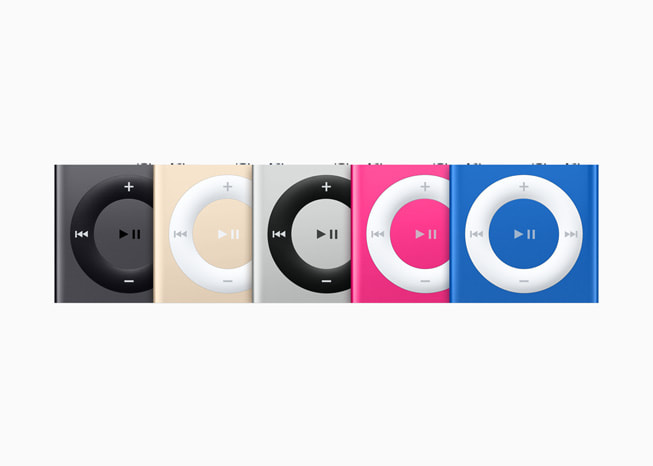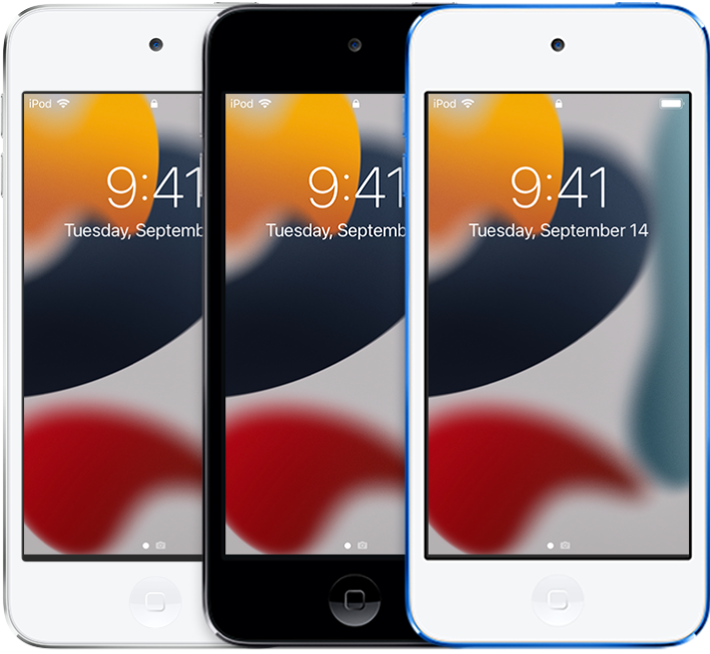In the vast and ever-evolving history of consumer technology, few devices command the same level of nostalgic reverence as the Apple iPod. It wasn’t just a product; it was a cultural phenomenon that redefined the music industry and set Apple on its trajectory to becoming the world’s most valuable company. At the heart of this revolution was a diverse family of devices, and among the most beloved was the iPod Mini. Its compact size, vibrant colors, and iconic Click Wheel made high-quality digital music accessible and fashionable for millions. Today, in an era dominated by the all-encompassing iPhone, the immersive potential of the Apple Vision Pro, and a constant stream of Apple ecosystem news, the idea of a dedicated music player seems almost quaint. Yet, conversations about an iPod revival news persist within the community. This isn’t just about nostalgia; it’s a deeper conversation about our relationship with technology, the desire for focused single-purpose devices, and the enduring legacy of Apple’s design philosophy. This article explores the iPod Mini’s groundbreaking impact, its eventual succession by a new generation of devices, and whether a modern equivalent could ever find its place in Apple’s forward-looking roadmap.
The iPod Mini’s Revolution: More Than Just a Smaller Player
When the iPod Mini launched in 2004, it was a masterclass in product strategy. The original iPod, while revolutionary, was still a relatively premium device. The Mini, with its smaller form factor and more accessible price point, democratized the digital music experience. It was the device that took the iPod from a tech enthusiast’s gadget to a mainstream fashion accessory. Its success wasn’t just about being smaller; it was about being smarter in its design and market positioning, a topic that still generates iPod Mini news and discussion among retro tech fans.
Breaking Down the Innovation
The iPod Mini’s technical genius lay in its balance of features, design, and usability. It was the first iPod to integrate the navigation buttons directly into the scroll wheel, creating the iconic “Click Wheel” that would define the product line for years to come. This streamlined the user interface, making it even more intuitive to navigate thousands of songs with one thumb. Its anodized aluminum body was not only durable but also introduced a splash of color—silver, gold, pink, blue, and green—to Apple’s product line, a stark contrast to the sterile white of the original iPod. This emphasis on personalization was a key driver of its appeal.
Inside, it housed a 4GB Hitachi Microdrive, a miniature hard drive that, while less robust than the solid-state flash memory that would later dominate, allowed Apple to hit a crucial capacity and price point. For most users, 4GB was more than enough to carry their essential music library, making the higher cost and bulk of the iPod Classic news of the time an unnecessary expense. The Mini perfectly captured the “just right” segment of the market, a strategy Apple would later perfect with its iPhone and iPad lineups.
Setting the Stage for the Apple Ecosystem
The iPod Mini, along with its siblings like the iPod Nano news and iPod Shuffle news that followed, did more than just sell millions of units. It was the primary vehicle for entrenching users in the nascent Apple ecosystem. Every iPod sold was a gateway to the iTunes Music Store, creating a powerful synergy between hardware, software, and services. This model became the blueprint for the App Store on the iPhone. The seamless experience of buying music on a computer and effortlessly syncing it to a portable device was magical at the time and built a level of customer loyalty that competitors struggled to replicate. This early ecosystem lock-in, built on the back of the iPod family, was a critical foundation for the explosive growth that followed with the latest iPhone news and iPad news.
The iPhone’s Shadow: The Inevitable Cannibalization

Steve Jobs famously quoted Wayne Gretzky: “I skate to where the puck is going to be, not where it has been.” In 2007, Apple proved it was willing to risk its most successful product to create the future. The launch of the first iPhone, a device that combined “a widescreen iPod with touch controls, a revolutionary mobile phone, and a breakthrough internet communications device,” marked the beginning of the end for the dedicated music player. The latest iPod news quickly became secondary to the excitement around the new do-it-all device.
The Convergence Device Triumphs
The iPhone’s success was built on the principle of convergence. Why carry a phone, a camera, and an iPod when one device could do it all, and do it better? The multi-touch screen offered a far richer interface for browsing music and watching videos than the Click Wheel ever could. With the App Store’s launch in 2008, the iPhone’s capabilities expanded exponentially, leaving single-purpose devices like the iPod feeling limited. Sales data tells a clear story: iPod sales peaked in 2008 and began a steady decline as iPhone adoption skyrocketed. The iPod Touch news kept the brand alive for a while, serving as an “iPhone without the phone” for kids and users who didn’t need cellular connectivity, but it too was living on borrowed time. Its eventual discontinuation in 2022 was the final, quiet end to the iPod era.
From Dedicated Players to Wearable Audio
As the iPod faded, Apple’s audio strategy underwent a profound transformation. The focus shifted from the device playing the music to the experience of listening to it. The launch of AirPods in 2016 was a pivotal moment. This is where the AirPods news truly began to dominate the audio conversation. These truly wireless earbuds offered a seamless, magical pairing experience that was deeply integrated into the Apple ecosystem. The subsequent releases of the AirPods Pro news with active noise cancellation and the high-fidelity AirPods Max news cemented Apple’s leadership in the personal audio space.
Simultaneously, the Apple Watch evolved into a powerful, self-sufficient media player. For runners and fitness enthusiasts, the ability to stream Apple Music or podcasts directly to their AirPods from their wrist, without carrying a bulky phone, was a game-changer. This convergence of health and audio, a constant theme in Apple health news and Apple Watch news, delivered the core promise of the iPod Shuffle—music on the go—in a far more advanced and versatile package.
The Revival Debate: Is There a Place for a 21st-Century iPod?
Despite the technical superiority of the iPhone and Apple Watch as music players, a vocal segment of the tech community continues to clamor for a modern iPod. This desire stems from two distinct, yet related, modern anxieties: digital distraction and the pursuit of audio purity. The constant stream of notifications on a smartphone can shatter the immersive experience of listening to an album, leading to a demand for “digital detox” devices.
The “Digital Detox” and High-Fidelity Audio Argument
A modern, dedicated music player could serve as a sanctuary from the digital noise of social media, emails, and messages. It would be a device for intentional listening, allowing users to reconnect with their music without interruption. This aligns with a growing wellness trend of carving out focused, single-tasking moments in a multi-tasking world.

Furthermore, the rise of lossless and Spatial Audio on Apple Music presents a compelling technical argument. While iPhones are capable of playing high-resolution audio, a dedicated device could be engineered from the ground up for audiophiles. This hypothetical “iPod Hi-Fi” could feature a superior Digital-to-Analog Converter (DAC), a dedicated high-performance amplifier, and perhaps even the return of a high-quality 3.5mm headphone jack to cater to the wired headphone enthusiast community. It could be the ultimate portable companion to the high-fidelity experience offered by the HomePod mini news, designed for personal, on-the-go listening.
What Would a Modern iPod Mini Look Like?
Speculating on a modern iPod is a favorite pastime for Apple fans. A revived device would likely draw inspiration from the classic iPod Mini’s beloved aluminum design, but with modern internals. It could feature a small, edge-to-edge OLED display running a stripped-down version of iOS, focused exclusively on the Music and Podcasts apps. There would be no web browser, no App Store, and no social media. Voice control via Siri would be a key interaction method, aligning with current Siri news on hands-free functionality. Deep integration with the broader ecosystem would be essential, featuring effortless Handoff to a HomePod and seamless pairing with the entire AirPods line. It would need to respect modern standards, with USB-C for charging and data transfer, and robust privacy features, a cornerstone of Apple privacy news and iOS security news.
Apple’s New Frontier: Why a Retro Device Might Not Fit the Vision
While the arguments for a new iPod are emotionally and technically compelling, the business reality and Apple’s current trajectory suggest it’s an unlikely proposition. Apple is no longer the company that makes single-purpose devices; it’s the company that builds comprehensive computing platforms. The future, as Apple sees it, is not in our pockets, but on our faces and integrated into our environment.
The Focus on Spatial Computing and AR

The immense investment in the Apple Vision Pro platform is a clear indicator of Apple’s priorities. The latest Apple Vision Pro news points to a future of spatial computing, an entirely new paradigm for interaction that blends digital content with the physical world. This is a multi-decade project that will consume enormous engineering and marketing resources. In this context, dedicating a team to a niche, backward-looking product like an iPod seems improbable. The focus is on building out the ecosystem around this new platform, with a constant stream of Vision Pro accessories news and speculation around future inputs like an Apple Pencil Vision Pro news or a dedicated Vision Pro wand news. Even current Apple accessories news, such as the development of AirTag news, is about extending the utility of the core iPhone platform, not creating standalone experiences.
The Business Reality
The market for dedicated high-resolution audio players is small and already served by specialized companies. For a company of Apple’s scale, the potential return on investment for a new iPod would be a rounding error compared to its flagship products. The company’s services strategy, highlighted by Apple TV marketing news, is to push Apple Music, TV+, and Arcade onto its most popular hardware platforms: iPhone, iPad, and Mac. A new iPod would support Apple Music, but its limited user base would do little to move the needle on subscription growth. The company’s resources are better spent enhancing the audio experience on the hundreds of millions of devices already in customers’ hands, a strategy confirmed by every new release of iOS updates news.
Conclusion: The Enduring Spirit of the iPod
The iPod Mini remains an icon of a bygone era, a testament to Apple’s ability to blend beautiful design, intuitive software, and brilliant marketing into a world-changing product. While the probability of seeing a new iPod on the shelves of an Apple Store is vanishingly small, its legacy is far from over. The spirit of the iPod—its focus on simplicity, its dedication to a single, joyful experience, and its seamless integration of hardware and software—is embedded in the DNA of Apple’s most successful modern products.
The seamless magic of AirPods connecting to an iPhone, the freedom of going for a run with just an Apple Watch and a playlist, and the curated, high-quality experience of Apple Music are all direct descendants of the iPod’s original vision. The persistent discussion of an iPod revival news serves as a valuable reminder that in a world of ever-increasing complexity, there is a profound and enduring human desire for simplicity, focus, and a direct, unmediated connection to the art we love. The iPod may be gone, but its echo reverberates through everything Apple does today and will continue to do in the future.











